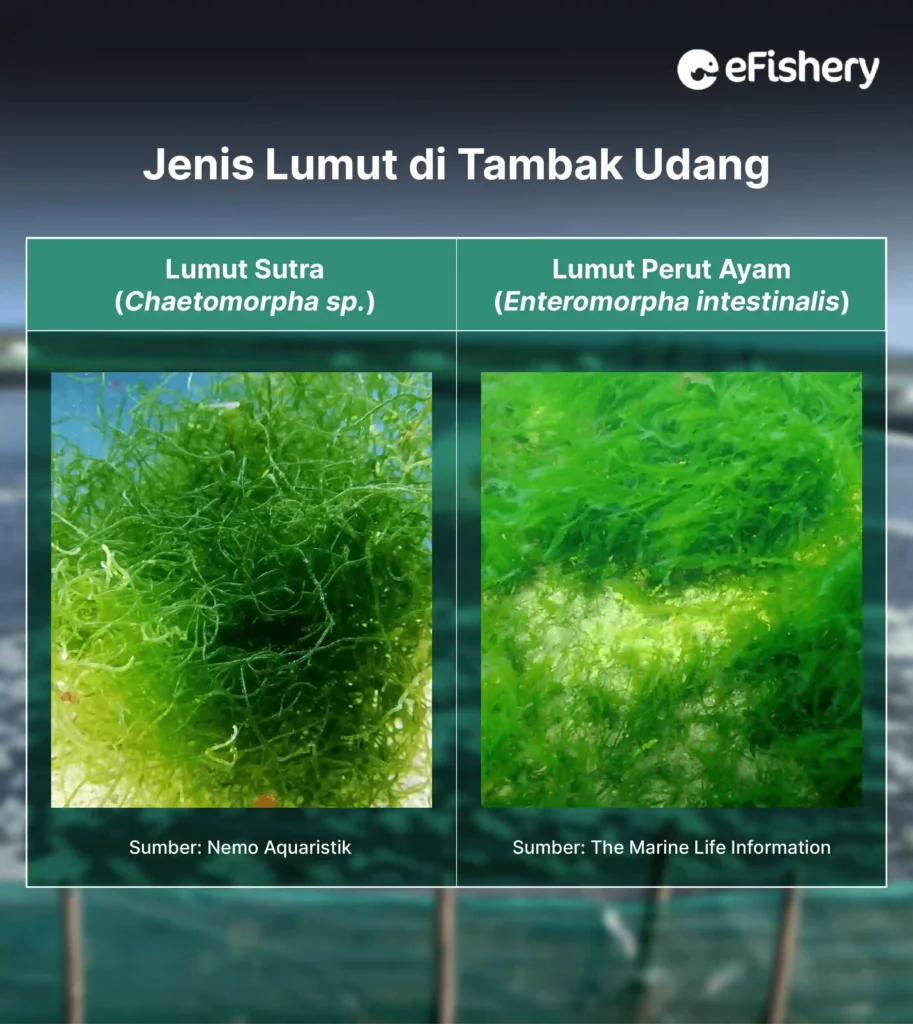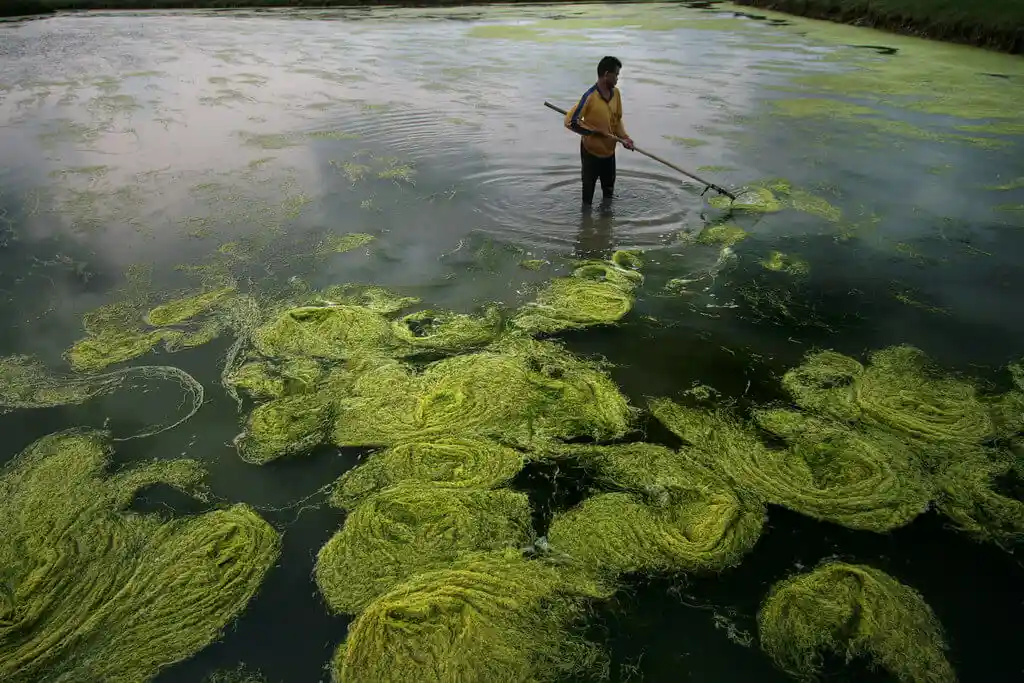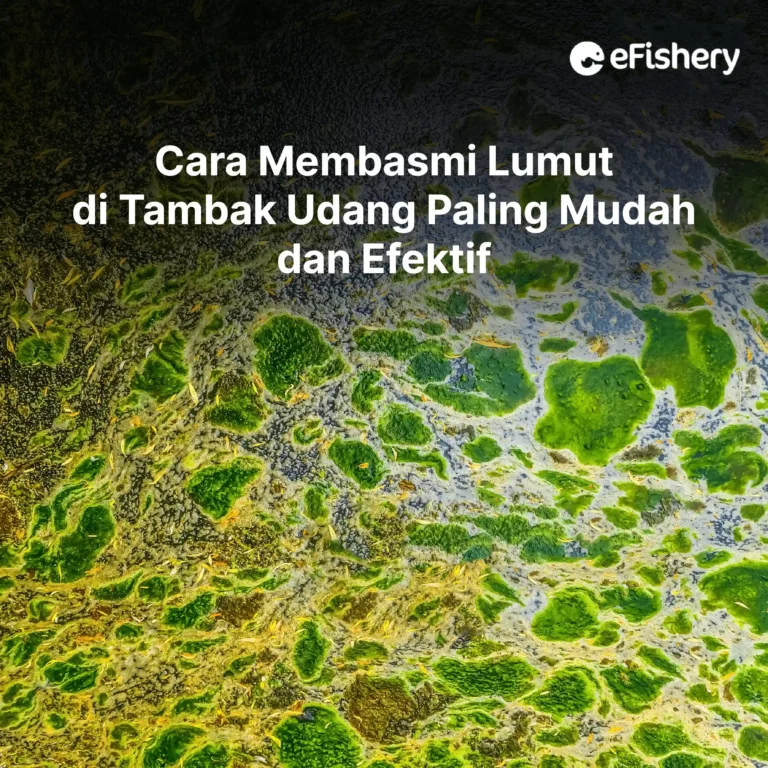Artikel Ini Telah Direview Oleh:

Syavin Pristiwayuning
Penulis Makalah Ilmiah Perikanan

Muhammad Mustofa
Praktisi Budidaya Udang
Has moss appeared on your shrimp pond? If so, how to get rid of moss in your shrimp pond is quite easy. By eliminating moss in your pond, you have taken one of the steps to maintain water quality, so that the cultivation you are currently undertaking is not disturbed.
Moss is a type of plant that lives in water, which is often found in shrimp ponds. Moss that grows in shrimp ponds can affect the cultivation process, especially the quality of the water which will affect the health of the shrimp, so that it can inhibit the growth of the shrimp. The worst thing that can happen is the death of the shrimp and the cultivation does not run optimally.
For that, let's look at this article to find out the easiest and most effective way to deal with moss in shrimp ponds!
Types of Lichens in Shrimp Ponds
Moss is a chlorophyll plant that carries out photosynthetic activity and can grow to a certain depth, where sunlight can still penetrate the water and can be used for photosynthetic activity.
The presence of moss in shrimp ponds occurs due to the relatively high brightness of the water which lasts a long time, accompanied by an excessive fertilization process. Moss that grows will inhibit the activity and growth of shrimp and phytoplankton in the pond.
Generally, the type of moss that often appears in shrimp ponds is silk moss (Chaetomorpha sp.) and chicken stomach moss (Enteromorpha intestinalis). These two types of moss can grow quickly and cause a body of water to be covered up to 100%, starting from the bottom to the surface of the water in the pond.

If you just let the moss grow and develop uncontrollably, over time it will die and rot. This decay will cause a decrease in water quality and will harm the shrimp in the ponds.
These mosses are enemies for intensive system vannamei shrimp farmers. However, traditional shrimp farmers use moss as additional feed. However, if the handling in the process of processing moss as additional feed is not good and correct, it will actually be dangerous for shrimp.
Likelihood of occurrence blooming Moss can occur and cause the shrimp to lose their space for movement and the moss will suck up all the nutrients needed by the phytoplankton in the pond, so the water will appear clear but the water is filled with moss. In addition, moss can also be a nesting site for pathogenic bacteria, so moss needs to be removed and eradicated.
Causes of the Appearance of Moss in Shrimp Ponds
The appearance of moss in shrimp ponds is caused by several factors. By knowing the causes of moss growth, it will make it easier for you to deal with and eradicate moss in ponds. The following are the causes of the appearance of moss, including:
- High Water Brightness
The presence of moss in shrimp ponds is caused by pond water that is too clear, so that the intensity of sunlight easily penetrates the water. Sunlight can trigger the growth of spores into moss. You need to know that a water clarity level that is too high is not good for ponds, the optimal water clarity is 40% from the water level.
- Leftover Feed and Shrimp Manure
Leftover feed and shrimp waste is one of the factors for the appearance of moss in shrimp ponds. If the remaining feed and shrimp waste is not cleaned, it will settle to the bottom of the pond and turn into organic matter in the pond. Organic substances make moss grow fast and develop in shrimp ponds.
- Salinity Fluctuations
Salinity in ponds is strongly influenced by the season, both rainy and dry seasons. Salinity in the dry season reaches > 50‰, while during the rainy season < 10‰. When the salinity is low, moss will appear due to the presence of fresh water from rainwater.
Moss can grow and develop up to a salinity of 30‰, so its presence will disturb the shrimp because movement tends to be difficult, this will disrupt the shrimp's metabolism.
- High Organic Matter
Mossy water in ponds can be caused by high organic matter, such as phosphorus and nitrogen. Moss can cause pond water to become fishy, dirty and smelly. If the growth of moss is not immediately addressed, it will cause losses to cultivation.
Moss Hazards for Shrimp
Shrimp ponds that contain moss will have dirty and smelly water. The appearance of excess algae can harm shrimp. As mentioned above, the appearance of moss is caused by water that is too clear.

If the brightness of the water penetrates to the bottom of the pond, moss will thrive, causing the bottom of the pond to become slippery and dirty. In addition, moss will grow evenly on the pond walls and trap dirt, such as silt particles, dead plankton and suspended solids.
The appearance of moss in shrimp ponds can result in danger, such as preventing shrimp from eating the feed provided and at the same time causing protozoa species to emerge Zoothamnium And Epistylis. This protozoa will nest in the pond wall.
If the protozoa are between the mosses, it is possible that they can enter the shrimp gills, thereby disrupting the respiration and metabolic activities of the shrimp. This can cause a decrease in shrimp appetite. If this happens, the growth of the shrimp will be hampered, the shrimp will become porous, and the cultivation will not run optimally.
How to Get Rid of Lichens in Shrimp Ponds
The presence of moss in ponds needs to be addressed so that the respiration and metabolic activities of the shrimp are not disturbed. There are several ways to get rid of algae in shrimp ponds that can be done easily and effectively, such as:
- Reduce sun exposure by using nets as pond covers
- Improve and maintain pond water quality
- Reduce the density of shrimp in ponds
- Clean the walls and bottom of the pool regularly
- Keeping moss-eating fish, such as milkfish and rabbitfish
- Install a pond filter for stable water circulation
- Do siphon on shrimp ponds to remove silt at the bottom of the pond
- Gunakan bakteri pengurai pada kolam pemeliharaan
- Use dolomitic lime to increase the acidity of the water
- Apply moss exterminator in ponds
- Apply cupric sulfate disinfectant during cultivation preparation to prevent moss growth
- Tingkatkan populasi plankton untuk mengurangi tingkat kejernihan air tambak
Dapatkan Bantuan untuk Mengatasi Lumut Bersama Ahli Budidaya!
Need Help Regarding Shrimp Cultivation Business?
Fill in your personal data in the following form. Our team will immediately contact you via the number cellphone attached. Make sure the data entered is correct.
Bagi Bapak/Ibu yang masih bingung terkait cara mengatasi lumut di tambak udang dan ingin langsung bertanya/berkonsultasi dengan Ahli Budidaya, Bapak/Ibu bisa berkonsultasi di fitur Cultivation Consultation in app eFarm.
Cultivation Consultation is a feature FREE yang bisa Bapak/Ibu gunakan kapanpun dan dimanapun. Selain konsultasi mengenai lumut di tambak udang, Bapak/Ibu juga bisa mengkonsultasikan hal lain seputar budidaya udang.
Isi formulir di atas untuk mengakses fitur Cultivation Consultation!

Muhammad Mustofa - Praktisi Budidaya Udang
Berpengalaman sebagai Asisten Dosen Universitas Pekalongan dan kini menjadi Online Technical Capability Development di eFishery

Syavin Pristiwayuning - Penulis Makalah Ilmiah Perikanan
Berpengalaman sebagai asisten koordinator pelatihan teknisi pada tahun 2020 dan saat ini aktif sebagai Technical Support Online di eFishery
- Today WAS. Potential of Silk Moss (Chaetomorpha sp.) as a Supplementary Component of Export Quality Catfish (Clarias sp.) Feed
- Nemo Aquarist. Chaetomorpha linum – Drahtalge
- Suharyanto. 2009. Rearing of Bearfish (Siganus guttatus) as Biocontrol of Algae Chaetomorpha sp. and Enteromorpha intestinalis in Tambak. Fisheries Journal. 11(2): 206-211.
- Supono. 2019. Low Salinity Vaname Shrimp Cultivation, Solutions for Cultivation in Critical Lands. Graha Ilmu. 100 pp.
- The Marine Life Information Network. Information on the Biology of Species and the Ecology of Habitats Found Around the Coasts and Seas of the British Isles.
